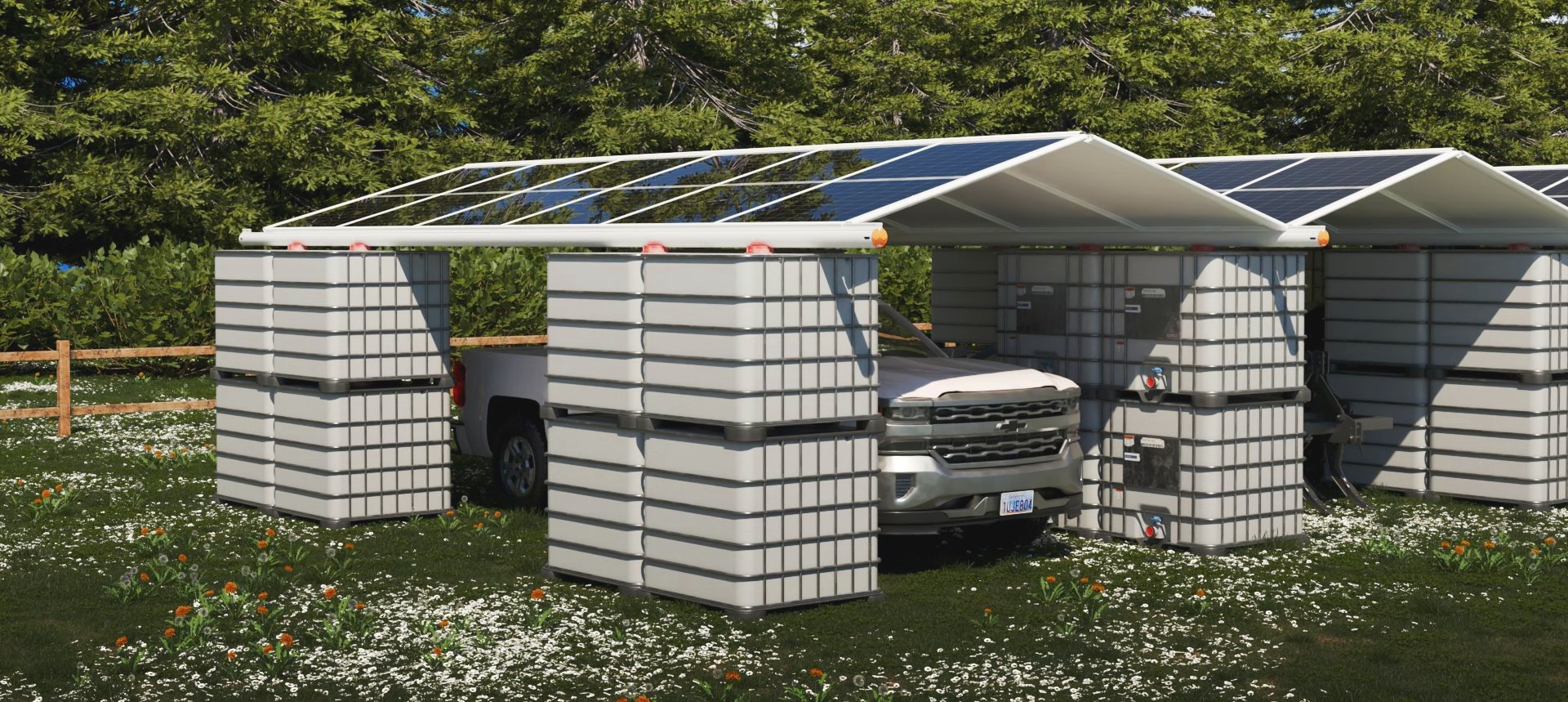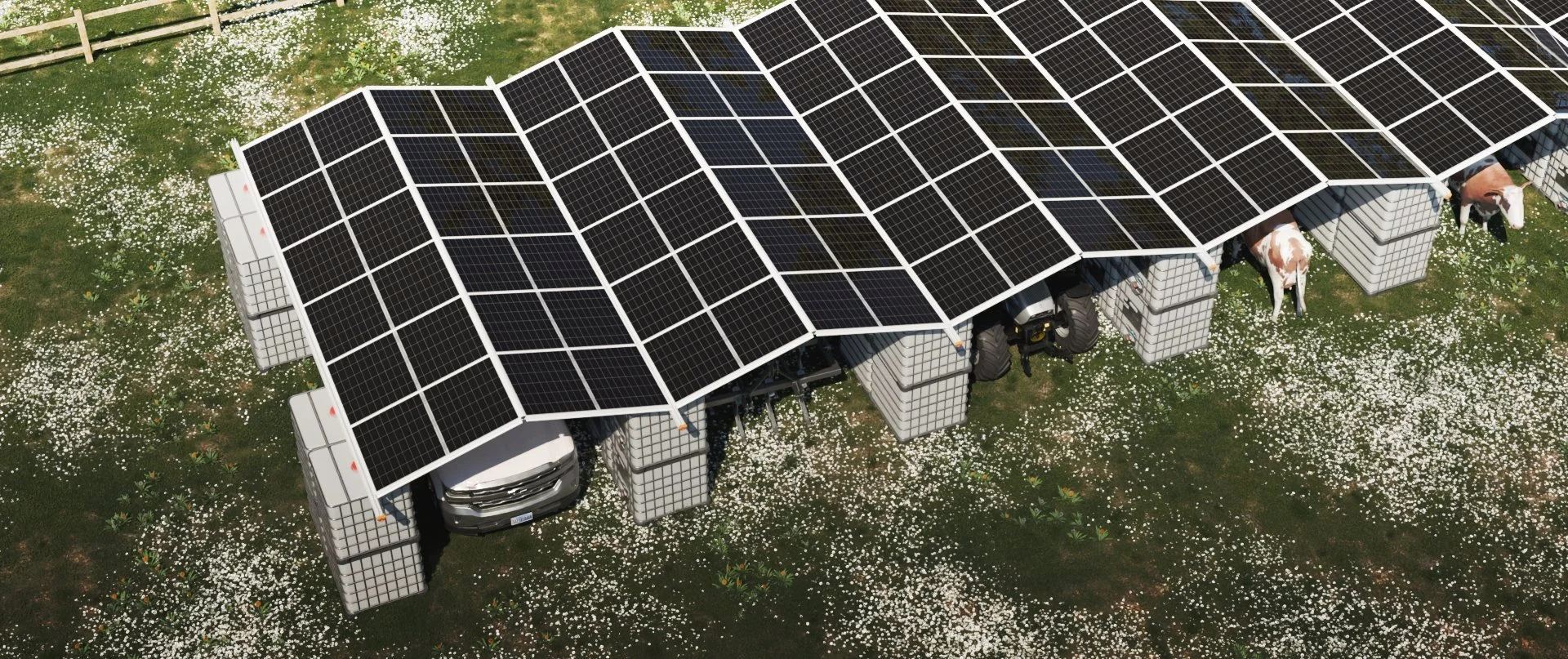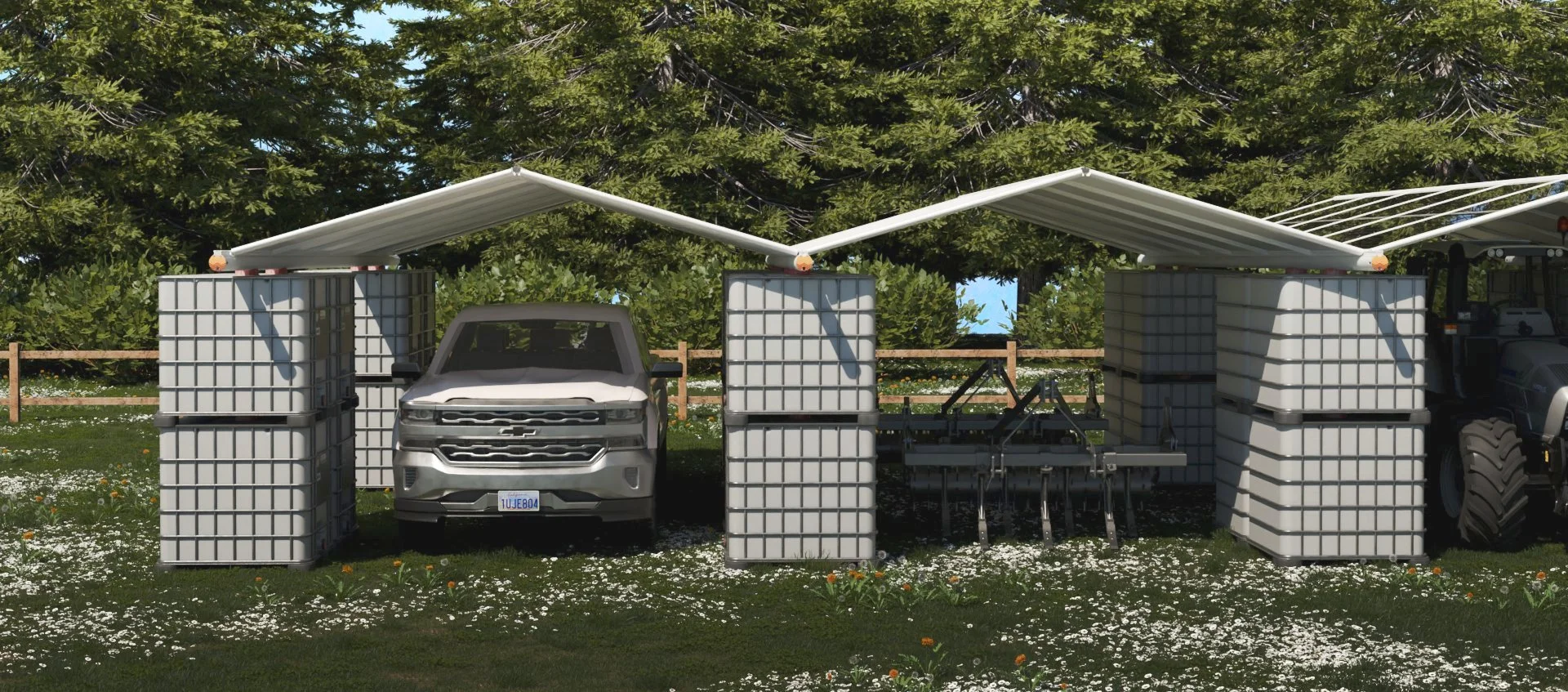
Solar Waves Full Rainfall Collection
-

Off-Grid Power
Solar Waves containerised systems deliver clean, reliable energy to farms and remote sites. Built on durable IVC containers, they’re ideal for water pumps, tools, and off-grid farm buildings. Pre-wired and ready to deploy, they enable sustainable farming anywhere power is needed.
-

Rainwater Harvesting
Solar Waves containers double as water catchment systems, collecting rainwater for on-farm use. Ideal for irrigation, troughs, and drought reserves, they're paired with solar-powered pumps to deliver off-grid water independence—sustainable, reliable, and low-maintenance.
-

Multi-Use Solar Shelters
Solar Waves’ raised solar roofs create sheltered space for parking, storage, or livestock shade. Extending beyond the container, they add practical on-farm infrastructure—delivering clean energy without taking up extra land.
Self-Cleaning & Rainwater Collection
Introducing the world’s first solar array with built-in self-cleaning and rainwater harvesting. Solar Waves uses rainwater collected in its ridged design, pumping it from the top to automatically clean panels—no manual effort required. This not only maintains peak performance but also reduces water waste and maintenance costs. By combining sustainability with smart automation, Solar Waves sets a new global standard in efficient, low-maintenance solar technology.

Solar Power Output Simulation
This tool makes our solar performance simulations accessible to the public — from policymakers to investors. It models how much energy a solar array can generate in any global location using real weather data and solar physics.
The model accounts for:
Panel orientation (e.g. south-facing or east-west-facing)
Local solar irradiance (sunlight availability)
Panel specifications (wattage, efficiency, area)
Cooling effects from water surfaces below the array
Our goal is to share the science behind Solar Waves: Solar installations that not only generate power but also reduce water evaporation in dry climates.
Use the map to choose a location, configure the system, and explore monthly and annual energy output.

